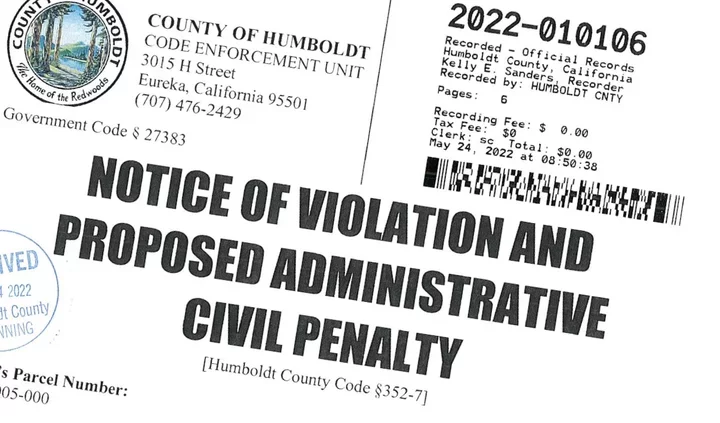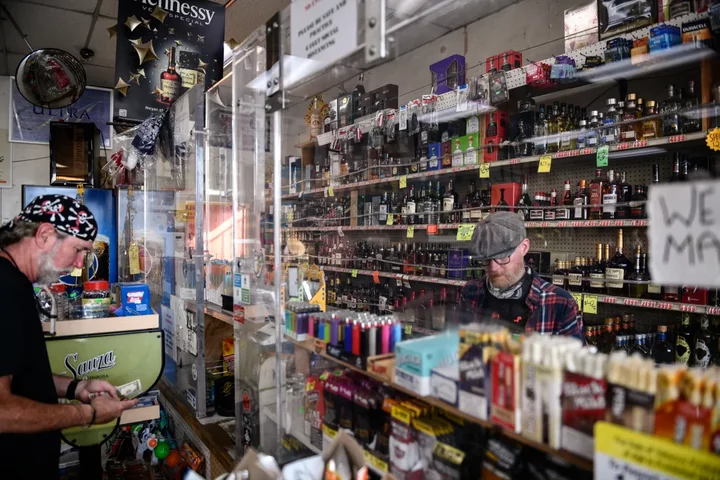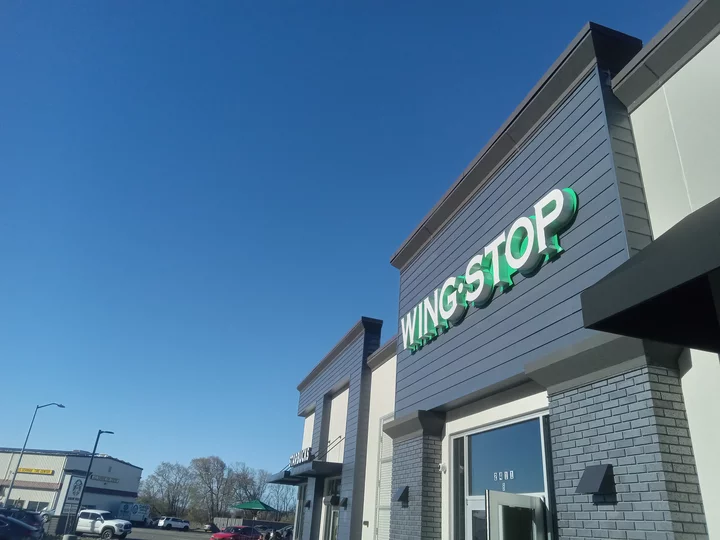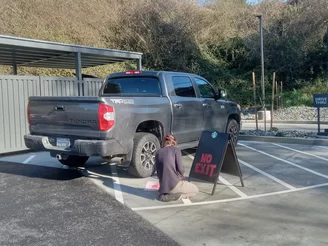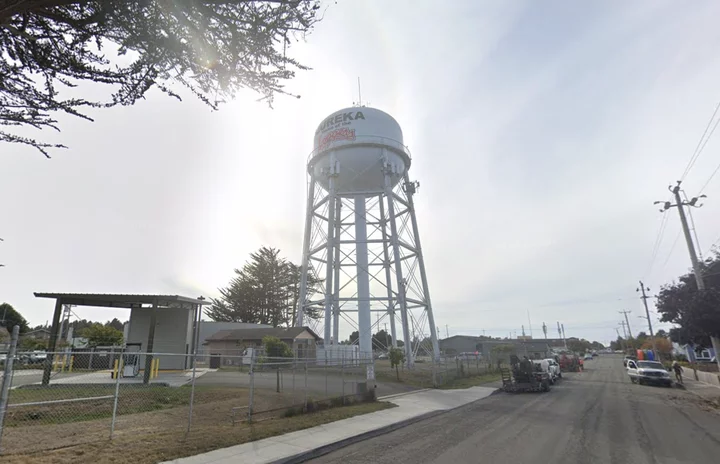OBITUARY: Nicholas Kaleo-O-Alii Liegl, 1983-2024
LoCO Staff / Wednesday, Jan. 1 @ 6:56 a.m. / Obits
It is with deepest sorrow that we announce the sudden passing of Nicholas Kaleo-O-Alii Liegl on December 10, 2024 at the age of 41.
Nick was born in Eureka on January 4, 1983 to father Dan Liegl and mother Janice Kahoalii Pettit.
Nick leaves a huge hole in the hearts of his friends and family, who were always entertained by his stories and hilarious sense of humor.
Nick graduated from Eureka High school in 2000 and furthered his education attending College of the Redwoods as a Auto Technician. You could always find him working on his cars and making sure his cars are washed, polished and his rims shine.
Nick is preceded in death by his grandparents Joseph and Katherine Kahoalii, and Uncle’s Joe and Jay Kahoalii, who he loved dearly.
Nick is survived by his only son, Joseph Napua Liegl; his brother, Daniel Liegl; sister, Teara Buckmaster; nieces Lalia, Kenya, Neiva, Daniela, Delicia and nephew Daniel (Junior) Liegl. He will truly be missed by his uncles, aunties and cousins, who are too many to mention.
Family is having a celebration of life on January 4, 2025 from 2 p.m. to 7 p.m. at the Eureka Women’s Club on J Street. We are doing a pot luck for all to enjoy.
###
The obituary above was submitted on behalf of Nicholas Liegl’s loved ones. The Lost Coast Outpost runs obituaries of Humboldt County residents at no charge. See guidelines here. Email news@lostcoastoutpost.com.
BOOKED
Today: 3 felonies, 13 misdemeanors, 0 infractions
JUDGED
Humboldt County Superior Court Calendar: Today
CHP REPORTS
8469 Mm101 N Men R84.70 (HM office): Traffic Hazard
0 Us101 (HM office): Traffic Hazard
ELSEWHERE
RHBB: Motorcycle and Vehicle Collide on Highway 101 Near Route 162; Air Ambulance Responds
RHBB: Collision Near Buhn & J Streets in Eureka
County of Humboldt Meetings: Humboldt County Workforce Development Board Executive Committee
County of Humboldt Meetings: Fish & Game Advisory Commission Agenda - Regular Meeting
Weekend Shooting Incidents in Arcata, Hoopa and McKinleyville; Sheriff’s Office Investigating Possible Connections Between Them All
LoCO Staff / Tuesday, Dec. 31, 2024 @ 3:41 p.m. / Crime
Press release from the Humboldt County Sheriff’s Office:
Between December 28 and 29, Humboldt County Sheriff’s deputies responded to several incidents involving shootings along roadways in the county.
On Dec. 28 around 12:30 a.m., two individuals were involved in an altercation inside Toni’s 24-Hour Restaurant, Arcata. After leaving the establishment, the dispute escalated as they drove northbound on Highway 101, during which shots were fired. Shell casings were later recovered on Central Ave. and Henry Ln. in McKinleyville.
On Dec. 28 around 11 p.m., suspects shot at a victim’s vehicle while both vehicles were driving on Highway 96 in Hoopa following a physical altercation involving several adult males that occurred near the Hoopa Modular Building. One 23-year-old male sustained non-life-threatening suspected gunshot wounds to the chest and side area, was taken to a local hospital for treatment. Gage Thunderhawk Marshall, 28, of Hoopa, was taken into custody and booked at the Humboldt County Correctional Facility for an outstanding warrant for battery with serious bodily injury (PC 243(d)). Ginuh Lincoln, 40, of Hoopa, was also taken into custody and booked for assault with a deadly weapon.
On Dec. 29 at about 7:15 p.m., deputies responded to Railroad Dr. and Walnut Ave. in McKinleyville for several reports of a possible drive-by shooting in the area that came from a dark blue or green SUV. 10 bullet casings were found on Walnut Ave. near the Railroad Rd. intersection. No injuries have been reported.
Connections between the incidents and involved parties are being considered based on details gathered so far in the investigation. Some of the witnesses were reluctant to provide details regarding these incidents. Investigators are following up on leads.
These cases are still under investigation.
Anyone with information about this case or related criminal activity is encouraged to call the Humboldt County Sheriff’s Office at (707) 445-7251 or the Sheriff’s Office Crime Tip line at (707) 268-2539.
Appeals Court Reverses Dismissal of Class Action Suit Challenging Humboldt County’s Cannabis Abatement Penalties, Sending the Case Back to District Court
Ryan Burns / Tuesday, Dec. 31, 2024 @ 12:43 p.m. / Courts , Government
Detail of a county notice of violation.
###
PREVIOUSLY
###
A group of Southern Humboldt property owners can proceed with their class action lawsuit against the county and its leaders, challenging the legality of fees and penalties levied under the Planning and Building Department’s cannabis code enforcement system, following a decision handed down yesterday in the Ninth Circuit U.S. Court of Appeals.
The decision, filed Monday by a three-judge panel, partially upholds and partially reverses last year’s dismissal of the case, sending it back to the district court for further proceedings.
The case was filed by the nonprofit Institute for Justice on behalf of Miranda property owners Corrine and Doug Thomas, who were later joined by three other plaintiffs. Together they allege that the county violated their constitutional rights to due process by assessing exorbitant fines and fees for weed-related code violations that stemmed from the activities of previous owners.
The County of Humboldt was named as a defendant along with the Board of Supervisors, the Planning and Building Department and that department’s director, John Ford.
The appeals court’s decision focused only on one aspect of the district court’s ruling — namely, that Humboldt County’s system of administrative penalties and fees violates the Eighth Amendment’s prohibition on excessive fines. In his May 2023 ruling, United States Magistrate Judge Robert M. Illman dismissed that allegation, reasoning that while the plaintiffs had been sent notices of violation, “No party has actually paid a fine.” Therefore, he said, they lacked standing to sue.
But the appeals court panel disagreed, ruling that the county’s penalties caused plaintiffs emotional and psychological distress, and they had to spend money attempting to abate the violations by hiring engineers to inspect their property and attorneys to represent them in hearings.
Monday’s decision also reverses a district court ruling that the statute of limitations had expired, with the panel saying the clock only started to run when the plaintiffs were served with notices of violations, not, as the district court found, when the county enacted the relevant ordinance.
As for the merits of the case, the appeals court says plaintiffs “plausibly alleged” that the fines were excessive based on the following points:
- at least some of the plaintiffs have been charged with violations that happened before they purchased and moved onto their properties;
- the violations were inaccurately charged or were the fault of previous property owners;
- lesser penalties could accomplish the same health and safety goals; and
- the alleged offenses caused no harm beyond a technical lack of compliance with the county’s cannabis permitting regulations.
In the conclusion to Monday’s decision, Judge Richard A. Paez writes, “Local governments are often at the forefront of addressing difficult and complex issues. As a consequence, they undoubtedly require flexibility in their decision-making. Nonetheless, and as we have recently observed, ‘[t]he government cannot overstep its authority and impose fines on its citizens without paying heed to the limits posed by the Eighth Amendment.’”
The case will now return to the district court level for further proceedings consistent with the appeals court’s opinion.
The county declined to comment on Monday’s decision, with Public Information Specialist Cati Gallardo explaining via email, “[T]his is a legal matter and in order to respect the integrity of that process the county will not discuss this topic with the press at this time.”
The Institute for Justice, meanwhile, published the following statement on its website earlier today:
HUMBOLDT COUNTY, CALIFORNIA—Today, in a significant victory for property rights, the U.S. Court of Appeals for the Ninth Circuit overturned a district court decision that dismissed a lawsuit challenging Humboldt County’s unconstitutional code enforcement program. The lawsuit, brought by the Institute for Justice (IJ) on behalf of a group of Humboldt property owners, now moves forward to challenge the county’s abusive system of ruinous fines levied without investigation.
“This ruling is a critical step toward dismantling Humboldt County’s unconstitutional enforcement regime,” said IJ Attorney Jared McClain.
“The Ninth Circuit’s decision affirms that counties cannot impose exorbitant fines based on flimsy evidence and delay hearings indefinitely. This sets an important precedent, and we are eager to continue our fight for justice on behalf of Humboldt property owners.”
The lawsuit centers on Humboldt County’s aggressive and unconstitutional code enforcement practices. Following the legalization of marijuana in California, the county created a system where property owners could face hundreds of thousands of dollars in penalties for alleged violations supposedly linked to cannabis cultivation—even when no cultivation occurred. Some fines, for instance, were based on years-old satellite images, with no on-the-ground investigation ever conducted. Other fines were imposed because prior owners grew marijuana, even though the current owners were not involved in any way. Owners had to wait years for hearings while fines continued to accrue, often forcing settlements under duress.
Calling Humboldt’s fines an “overstep,” the Ninth Circuit wrote that, “there are clear and concrete injuries stemming from the imposition of the penalties. Taking Plaintiffs’ factual allegations as true and drawing all reasonable inferences in their favor, the continued imposition of such significant penalties has already caused Plaintiffs emotional and psychological distress.”
The plaintiffs in the lawsuit include Corinne and Doug Thomas, Blu Graham, and Rhonda Olson—all property owners who faced crippling fines for alleged violations they did not commit. The lawsuit challenges Humboldt’s fines as excessive and unconstitutional under the Eighth Amendment, while also asserting that the county’s code-enforcement system violates due process and imposes unconstitutional conditions on homeowners. All those claims can now go forward on remand.
This lawsuit is part of the Institute for Justice’s broader initiative to combat excessive fines and fees levied under the guise of zoning or property code enforcement. IJ’s nationwide efforts have already secured victories curbing abusive practices in Pagedale, Missouri, Indianapolis and elsewhere. By targeting unconstitutional fines, IJ aims to restore fairness and proportionality to local government practices.
###
DOCUMENT: Appeals court ruling in Thomas v. County of Humboldt, et al.
New Law Inspired by Ex-Lawmaker’s DUI Adds to Alcohol Education in California Schools
Ryan Sabalow / Tuesday, Dec. 31, 2024 @ 7 a.m. / Sacramento
Johnny McMahan completes a transaction with a maskless customer at Bargain Liquors in Long Beach, on June 15, 2021. Photo: Pablo Unzueta for CalMatters.
California public school students will get additional coursework on the harms of alcohol in 2025, thanks to a new law from a former lawmaker whose drunken driving arrest inspired her legislation.
In September, Gov. Gavin Newsom signed Assembly Bill 2865 by former Los Angeles Democratic Assemblymember Wendy Carrillo, whose DUI last year helped derail her political career.
California schools are already required to provide instruction about alcohol, narcotics and other dangerous drugs. This bill would require that schools also provide instruction about the short- and long-term harms of excessive drinking — including alcohol’s link to chronic diseases, mental health problems and deaths.
As she pitched her bill to her colleagues in 2024, Carrillo told them that it was important for students to learn about alcohol’s consequences in the hopes they don’t go down the path she did.
“I wish I would have known in high school what I know now,” she said at one hearing. “I would have made different choices.”
On Nov. 3, 2023, Carrillo crashed into parked cars in Northeast Los Angeles. Police said her blood-alcohol level was twice the legal limit, according to the Los Angeles Times. She ended up pleading no contest to the DUI in the middle of her race for Los Angeles City Council, which she lost. Because she ran for city council, Carrillo left her Assembly seat this year.
“I want young people to learn early how something that is so legally and easily accessible can do so much harm if not consumed with more knowledge and more responsibility.”
— Wendy Carrillo, former Assemblymember
Carrillo said her DUI was a wake up call for her. She said she started going to therapy and became sober. As she reflected on her life, she said her own struggles with booze began at an early age. And she was troubled by how prevalent alcohol is in society, despite its documented dangers.
Alcohol is a national and global health issue
According to federal health officials, alcohol-related diseases kill 178,000 people in the U.S. each year, and death rates are increasing. Noting that alcohol causes at least seven types of cancer, including bowel and breast cancers, the World Health Organization last year declared that “when it comes to alcohol consumption, there is no safe amount.”
Carrillo testified that 54 Californians die each day from alcohol.
“I want young people to learn early how something that is so legally and easily accessible can do so much harm if not consumed with more knowledge and more responsibility,” she told her colleagues.
Her bill passed without any lawmakers voting against it.
What the law will do
Under the new law, school boards can decide which grades receive the new instruction. They can ask the state for reimbursements for the costs of instruction, training and updates to instructional materials, said Nicholas Filipas, a spokesperson for the California Department of Education.
At the San Juan Unified School District in the Sacramento region, educators shouldn’t have trouble rolling the bill’s requirements into their schools’ curriculum, said Raj Rai, a spokesperson for the district, which educates about 39,000 students.
“Alcohol education has been embedded into our high school health class curriculum for quite some time,” Rai said in an email. “Our curriculum team will review the currently adopted health materials to see if anything additional is needed to meet the new requirements.”
The district already has several programs that teach students grades six through 12 about the harms of alcohol and drugs with the goal of reducing or eliminating teen substance abuse.
The district’s high schools also regularly participate in California’s Highway Patrol’s “Every 15 Minutes,” Rai said.The CHP describes the program as challenging teens to “think about drinking, driving, personal safety, the responsibility of making mature decisions and the impact their decisions have on family, friends, their community, and many others.”
###
CalMatters.org is a nonprofit, nonpartisan media venture explaining California policies and politics.
Wingstop Location Opens in Eureka, Inspires Overnight Campouts
Dezmond Remington / Monday, Dec. 30, 2024 @ 3:58 p.m. / Food
By Dezmond Remington.
Excellent news, fried chicken lovers! Humboldt County’s first Wingstop opened today in Eureka — and it’s already packed to the brim.
Wingstop, a fast-food joint founded in 1994, has expanded aggressively. They’ve opened over 500 new locations worldwide the last two years and started the process of opening a Eureka location in 2023.
Located on Broadway street, it’s open from 11 a.m. to midnight every day.
At noon today, barely an hour after opening, every parking spot in the lot (which Wingstop shares with a new Starbucks, at 2411 Broadway Street) was filled and the line inside to order food was backed up almost to the door. Most customers were waiting anywhere from 20 minutes to 45 minutes for their orders, but everyone waiting outside said they expected that to be the case and they didn’t fault the staff for that.
For some eager Wingstop fanatics, the wait has been excruciating. One employee of a nearby business (who asked to be left unnamed) said she talked to people who had camped outside of the Wingstop overnight.
One customer waiting for his 20-piece boneless wing special, local man Reuben Davis, said he tried to eat at Wingstop every time he was out of town and he was excited when he heard there would be a location opening up in Eureka.
“It’s nice to have a fried chicken place that’s semi-decent,” Davis said. “It’s nice to have another option here.”
Kai Lund, another local waiting on 50 wings to share with their friends, said they moved up from Wingstop-heavy Southern California when they were younger. They were overjoyed when they heard one was coming to Eureka.
“It was like I got my childhood back,” Lund said.
Lund says the main thing they like about Wingstop is the quality of their boneless wings and their customer service.
The demand for Wingstop, at least during today’s frenzy, was overwhelming the delicate ecosystem of the Starbucks-Wingstop alliance. People were parking in any available space, legal or not, and were whipping through the Starbucks drive-through to get back on the street. A Starbucks employee coloring in a sign asking people not to do that wasn’t too mad, though.
“It’s Wingstop!” she said. “It’s Wingstop in Humboldt. People need it.”
Eureka Police Will Conduct a DUI Checkpoint at an Undisclosed Location on New Year’s Day
LoCO Staff / Monday, Dec. 30, 2024 @ 12:55 p.m. / News
Press release from the Eureka Police Department:
Eureka, Calif. – On January 1st, the Eureka Police Department will conduct a driving under the influence (DUI) Checkpoint from 6:00 p.m. to 10:00 p.m. at an undisclosed location.
DUI checkpoint locations are determined based on data showing incidents of impaired driving-related crashes. The primary purpose of DUI checkpoints are to promote public safety by taking suspected impaired drivers off the road.
“Impaired drivers put others on the road at significant risk,” Chief Brian Stephens said. “Any prevention measures that reduce the number of impaired drivers on our roads significantly improve traffic safety.”
Eureka Police Department reminds the public that impaired driving is not just from alcohol. Some prescription medications and over-the-counter drugs may interfere with driving. While medicinal and recreational marijuana are legal, driving under the influence of marijuana is illegal.
Drivers charged with a first-time DUI face an average of $13,500 in fines and penalties, as well as a suspended license.
Funding for this program was provided by a grant from the California Office of Traffic Safety, through the National Highway Traffic Safety Administration.
After Three Hours of Negotiations, Distraught Woman Climbs Down from Atop Eureka’s Water Tower
LoCO Staff / Monday, Dec. 30, 2024 @ 11:29 a.m. / News
Google Street View image.
###
Press release from the Eureka Police Department:
On December 29, 2024, at about 1805 hours [6:05 p.m.], Eureka Police Department responded to Wood and L Streets for an adult female in crisis who climbed to the top of the water tower.
At times, the distraught female dangled off the railings by her hands.
Based on the magnitude and complexity of the situation, Humboldt Bay Fire (HBF), City Ambulance, Humboldt County Sheriff’s Office Crisis Negotiations Team Deputies (CNT), the Community Safety Engagement Team Mental Health Officer (CSET-MIST), the Crisis Alternative Response of Eureka Managing Mental Health Clinician (CARE), and a HCSO drone were called to assist. The United States Coast Guard and CHP were also contacted.
After three hours of negotiations, the female voluntarily climbed down the water tower. After being medically assessed, the female was placed on a mental health hold and transported to a local facility for care.
As this time of the year can be difficult time for many, we encourage anyone struggling to reach out to any of the following:
- 9-8-8 Suicide and Crisis Lifeline (call or text)
- Local Crisis Line: 707-445-7715
- Humboldt County Behavioral Health at 720 Wood Street in Eureka
- Local Emergency Departments
The Eureka Police Department would like to thank HBF, City Ambulance, CARE, and the Humboldt County Sheriff’s Office for their assistance during this incident.



